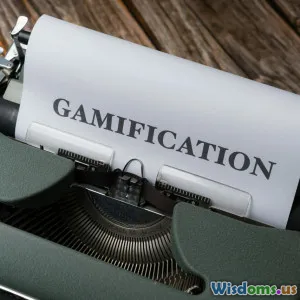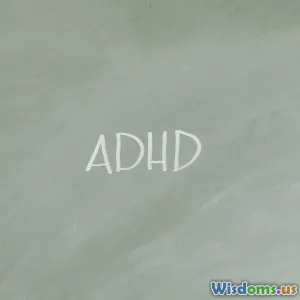
Does Gamification in Education Deliver on Its Promises
7 min read Explore whether gamification truly fulfills its educational promises with insights, examples, and data. (0 Reviews)
Does Gamification in Education Deliver on Its Promises?
Imagine a classroom where learning feels less like a chore and more like an exciting challenge — full of immediate rewards, competition, and discovery. This vision has propelled gamification to the forefront of educational innovation. But the pressing question remains: Does gamification in education truly deliver on its promises or is it just another fad?
Introduction: The Rise of Gamification in Education
Gamification, defined as the use of game elements in non-game contexts, has become a buzzword in educational settings. From awarding badges for completing assignments to leaderboards encouraging friendly competition, educators and edtech companies worldwide have embraced gamification with the goal of increasing motivation, engagement, and ultimately, learning outcomes.
Numerous forecasts, like those from MarketsandMarkets, predicted gamification in education market growth exceeding $870 million by 2023, highlighting widespread optimism. Yet, the real-world effectiveness and sustainability of gamification merit a thorough examination.
Understanding Gamification: More Than Just Points and Badges
Gamification encompasses various elements such as points, badges, leaderboards (PBL), narrative storytelling, levels, feedback loops, and challenges. These are designed to mimic the engaging aspects of games—immediate feedback, clear progress indicators, and intrinsic motivation triggers.
The Psychology Behind Gamification
The success of gamification relies heavily on psychological principles:
- Operant Conditioning: Rewarding desired behaviors increases their frequency.
- Self-Determination Theory: Gamification targets intrinsic motivation by supporting autonomy, competence, and relatedness.
- Flow Theory: Well-designed challenges help learners enter a state of flow, maintaining engagement through balanced skill and challenge.
Understanding these foundations helps educators design interventions beyond superficial rewards, aiming for deeper learner engagement.
Do Educational Gamification Strategies Improve Engagement?
A key promise of gamification is increased engagement. Numerous studies underline this:
- A 2019 meta-analysis published in Computers & Education found that gamified learning environments significantly improve student engagement compared to traditional methods.
- Platforms like Kahoot!, a game-based quiz tool, boast engagement rates exceeding those in standard classroom quizzes. Educators report higher attention spans and participation during gamified sessions.
However, engagement spikes may vary across demographics and subjects. For instance, younger students typically exhibit increased enthusiasm for gamified tasks compared to older students, who sometimes perceive gamification as trivial or distracting.
Does Gamification Lead to Measurable Learning Gains?
While engagement is promising, the crux lies in improved knowledge retention and skills. The evidence here is mixed:
- A 2018 study by Domínguez et al. in Spain involved a gamified e-learning system for university students studying computer science. Results demonstrated improved course completion rates and better exam scores in gamified groups.
- Conversely, a 2020 review by Sailer et al. found inconsistent evidence across disciplines; not all gamification components yielded learning improvements, and poorly designed gamification led to distraction.
Real-World Example: Duolingo’s Success
Duolingo, the language-learning app, integrates points, streaks, and levels to motivate learners. Studies analyzing Duolingo usage reveal faster vocabulary acquisition and improved language skills compared to traditional study methods, offering solid evidence for thoughtful gamification.
Challenges and Pitfalls of Gamification in Education
Gamification’s promise meets reality’s challenges:
Overjustification Effect and Motivation
Excessive focus on extrinsic rewards like points and badges can undermine intrinsic motivation, a phenomenon known as the overjustification effect. If students prioritize rewards over mastery, lasting learning suffers.
One-Size-Fits-All Design Drawbacks
Learners vary widely in preferences and motivational triggers. A competitive leaderboard may inspire some but discourage others, especially those prone to anxiety or lower self-confidence.
Complexity in Design and Implementation
Effective gamification demands thoughtful instructional design, technology infrastructure, and ongoing assessment. Without careful integration, gamification risks becoming a gimmick, adding complexity without benefit.
Best Practices: How to Harness Gamification Effectively
To harness gamification’s potential, educators and designers should consider:
- Aligning Gamification with Learning Objectives: Rewards and challenges should reinforce the curricular goals, not distract from them.
- Mixing Intrinsic and Extrinsic Motivators: Incorporate opportunities for autonomy, meaningful feedback, and social connection.
- Personalizing Game Elements: Use adaptive gamification where activities reflect individual learner profiles.
- Incorporating Narrative and Meaning: Embed content in a compelling storyline to enrich engagement beyond mechanics.
Platforms like Classcraft exemplify this approach, blending role-playing narratives with collaborative challenges and rewards connected to classroom behavior and learning progress.
Future Directions and Innovative Trends
Emerging trends promise to deepen gamification’s impact:
- Integration of AI: Personalized gamified learning paths adapting in real time to learner performance.
- Augmented and Virtual Reality: Immersive gamified environments fostering experiential learning.
- Focus on Social Gamification: Leveraging peer collaboration, competition, and support within game mechanics.
Conclusion: Does Gamification in Education Deliver?
The promise of gamification in education holds considerable merit—there is clearly potential to boost engagement and improve learning outcomes when applied thoughtfully. However, success depends on nuanced design that respects learner differences and curricular demands.
Gamification is not a magic bullet but a powerful tool in the educator’s toolkit. When used strategically, backed by research, and continuously evaluated, it can foster enriching, motivating learning experiences that truly deliver on its transformative promises.
The future lies not just in playing educational ‘games,’ but in creating meaningful, game-like experiences that inspire learners to joyfully pursue knowledge.
Rate the Post
User Reviews
Popular Posts





















